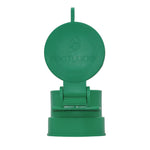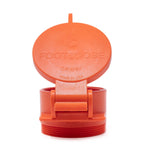You have no items in your shopping cart.
Have you noticed that your well water has a slightly different taste, smell, or color to it? Or maybe you’re taking a proactive approach and want to know how to make sure your water is as high-quality as possible. Whatever the case may be, if your home or business uses well water, protecting the water quality falls on your shoulders, and understanding what affects water quality is a powerful first step.
Poor well water quality can put your health at risk and create problems in your plumbing system. Our well specialists are giving you a crash course on the top factors affecting your water quality.
6 Factors Affecting Well Water Quality
There are many factors that impact your well water and its composition—some of them are more within your control than others. Let’s look at the six top factors that impact your well water quality and how they can affect you.
Water Drainage
There are countless microorganisms, chemicals, and other materials on the surface of your land that you don’t want to get into your water supply. In times of high rainfall or snow melting, though, that’s exactly what may happen. It can lead to water runoff that gets into your well opening.
You can prevent this with strategic ground sloping and other drainage techniques that route runoff water away from your well. Creating a safe and predictable drainage path for water runoff allows you to keep your water supply safe even in rain-heavy seasons.
Septic Leakage
Many homes and properties that use private wells also use septic tanks. While a septic tank does not affect your well water when it’s functioning properly, issues in your septic system could put your well water quality at risk.
If you develop a leak in your septic tank or other parts of your septic system, it could get into your water supply either through the surrounding soil or through your well opening if there is water runoff. A septic tank overflow can create this problem, too, as can placing your leach field too close to your water source.
Well Protection
The preventative measures you take to keep your well secure and free from contaminants will be one of the largest factors that impact your well water quality. Most notably, you need to protect the opening of your well. If the top of your well is open to the air, it’s vulnerable to chemicals, water runoff, and other potential contaminants—even live animals.
You can keep your well more secure by installing a well protector on your well opening. This helps keep water, chemicals, and anything else unwanted out of your well while still allowing you to access the well as needed.
Lawn and Farm Chemicals
The chemicals you use in tending to your property could be affecting the quality and safety of your well water. Many of the chemicals and products used in farming, lawn care, and gardening can be dangerous if you ingest them at high enough levels. This is especially the case for infants.
These chemicals can get into your well either by directly entering your well opening while you spray or apply the chemicals or through water runoff. Installing a well protector and managing your water drainage can help you keep chemicals out of your water.

Soil and Rock Makeup
While many of the well quality factors above are directly within your control, there are some factors that aren’t. That includes your soil makeup.
Certain types of rock and sediment will affect your water because of the minerals and compounds that get into your water from the soil. For example, if you have hard water, it’s likely because there is limestone or gypsum in your soil. These or certain other types of rock can leach excess calcium or magnesium into your water, causing hard water. If you have iron or sulfur in your water, it also comes from the ground makeup.
Hard water, iron, and sulfur typically aren’t dangerous for your health, but they can cause buildup and other issues in your plumbing. They’re still water quality issues you’ll want to address, generally with either a filtering system or a water softener.
Air Quality
This may surprise you, but the pollutants and materials in your air can impact your well water quality. Some plants may pull certain minerals or compounds from the air and pull them into their roots. Eventually, they end up in the soil, where they may reach your well water source.
The most common example of this is nitrogen. Some plants can pull nitrogen from the air and attach it to their roots. Any nitrogen they don’t use goes into the soil. This can be a problem, though, because some nitrogen compounds like nitrates can create health risks, especially for infants.
Top Tips to Protect Your Well Water Quality
How can you prevent or minimize a drop in well water quality from the factors above? Start with these top tips:
1. Install a well protector for your well.
2. Have a specialist evaluate your water drainage, and if you are at risk for water runoff impacting your well, design a drainage solution.
3. Keep up with routine maintenance for your septic system, including inspections and draining.
4. Be mindful of the chemicals you use in your farming, lawn care, and gardening and aim for products that have little or no impact on your water quality.
5. Identify the soil makeup on your property and install a water filtering system that can properly filter out the unwanted minerals that are most prominent in your water.
6. Regularly monitor your well water quality so you know if contaminants are reaching your water and determine how to prevent them.
Healthy, clean water is a cornerstone of good health and a long-lasting plumbing system. To continue learning how to have healthier well water, explore our blog









